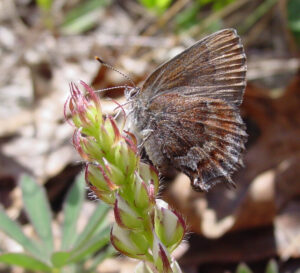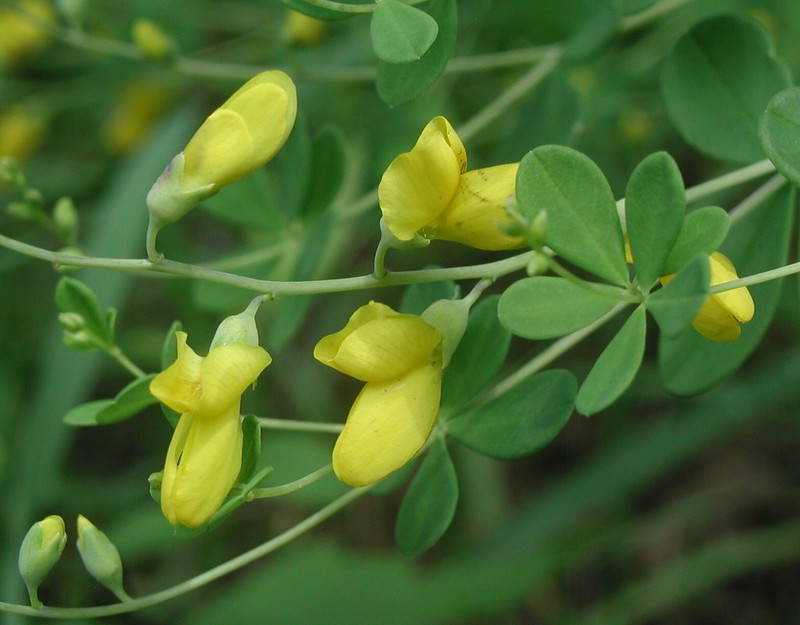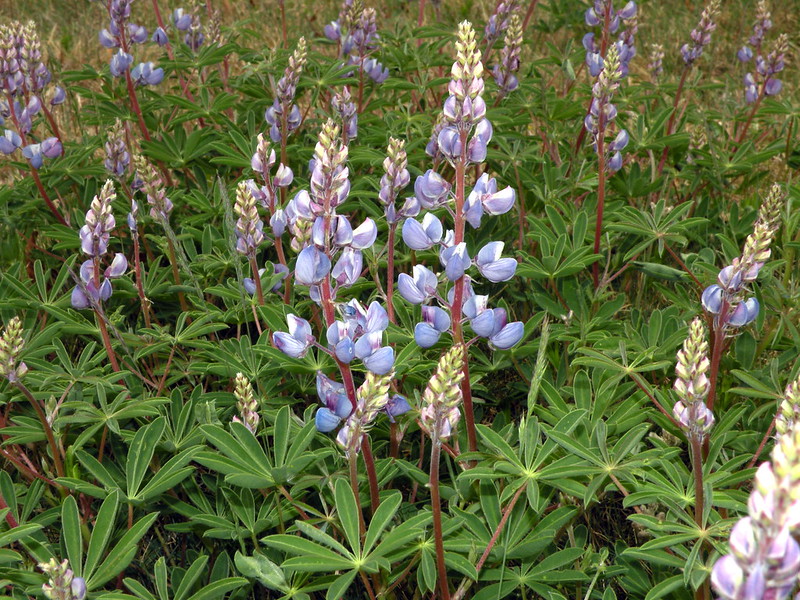Warmer temperatures as summer comes to Massachusetts have brought plants into rapid growth and flowering, and with them, the insects that depend on those plants have also become more active. Many of these insects are so small and well-camouflaged that you would never see them unless you went looking. This week’s spotlight species is one of those, but it’s also one of the most interesting stories of ecological specialization in Massachusetts.

Frosted Elfins are tiny, with a wingspan barely over one inch. They’re also cryptically colored with brown and gray, although a close-up look reveals a handsome pattern on their wings, including the silvery “frost” that gives the species its name. Adult Frosted Elfins are just beginning to emerge in May in Massachusetts, and after males impress a female with some fancy flying, the female lays her eggs on only one specific species of plant. Among butterflies and moths, specializing in just one kind of plant isn’t that unusual. What makes Frosted Elfins special is that they have two separate populations that each specialize on a different plant!
Some Frosted Elfins will only lay their eggs (and therefore nourish their caterpillars) on sundial lupine (right). Others will only lay their eggs on yellow wild-indigo (left).


Both plants are members of the legume or pea family (Fabaceae), and both tend to grow in open, sandy areas with minimal tree cover. Such dry, shrub-dominated habitats are in short supply in Massachusetts, where developed land and mature forest tend to dominate the landscape. Our Field Conservation team has visited several sites looking for Frosted Elfins and their host plants, and we’re integrating plans to bring lupine and wild-indigo to some of our field sites as part of our native pollinator program.
Interested in looking for Frosted Elfins yourself? These small, brown butterflies have many look-alike species and are not easily found, but if you think you’re up to the challenge, look for them in places like power line corridors and the scrubby edges of large, open fields. Adults have mostly stopped flying by now, but you may still find their oblong yellow-green caterpillars munching away and growing on appropriate host plants. If you have a good camera, you can take a photo and use iNaturalist to report your sighting for other nature fans to review and confirm your identification.
